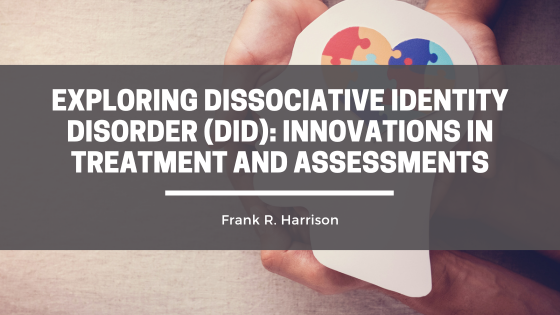Dissociative identity disorder (DID), formerly known as multiple personality disorder, is a challenging and sometimes misdiagnosed mental health condition that is marked by the presence of two or more distinct personality states. Identity confusion, memory loss, and intense distress are some of the consequences of DID. Even though the traditional therapy modalities have been used for many years, the new diagnostic and therapeutic techniques have given the patients more hope that they can be cured of this illness.
Understanding Dissociative Identity Disorder (DID)
DID is a severe trauma-based disorder that is often triggered by traumatic early life experiences such as abuse, neglect, or other extreme stressors. Dissociation is a coping strategy that allows the person to escape from the overwhelming feelings that are induced by the trauma. Dissociation may lead to the appearance of different personality states or alters. The state of identity fragmentation may be the result of this process.
DID is a multi-faceted disorder that is also stigmatized. Hence, the diagnosis is difficult. To diagnose properly, clinicians use thorough examinations that involve clinical interviews, identifying symptoms, and working with other medical specialists. However, the effectiveness of controlling the symptoms and promoting a better quality of life greatly depends on early detection and intervention.
Traditional Treatment Strategies of DID
Psychotherapy has been the primary form of treatment for DID all along. To treat the primary trauma and therefore bring together the scattered identities, therapies, including dialectical behavior therapy (DBT), cognitive-behavioral therapy (CBT), and psychoanalysis are used. Nevertheless, while they may be effective, such methods often require a long-term commitment and might not be enough to cope with the complexity of DID.
Innovations in DID Treatment
The use of more specific and extensive healing methods has been the main objective of the recent developments in the treatment of DID. An example of the invention is the Eye Movement Desensitization and Reprocessing (EMDR) method, which involves the combination of bilateral stimulation and memory processing to decrease the suffering and the process of traumatic experiences. The EMDR has shown the ability to deal with DID by helping patients reconnect the fragmented memories and reprocess the traumatic experiences.
Internal Family Systems (IFS) therapy is another new method that considers the mind as a system of separate pieces, or “subpersonalities.” In IFS treatment, the patients are taught to maintain harmonious relations between their minds’ inner components to become more self-aware, compassionate, and integrated. For the people with DID, this strategy has been the most successful in the cooperation and the communication among their alters.
Sensorimotor psychotherapy is another modern approach that focuses on the interaction of mind and body and somatic sensations. It is easier for people to work through traumatic memories and to release accumulated stress when the physical consequences of trauma are addressed. Sensorimotor psychotherapy facilitates the healing and integration process and is a body-centered approach that involves grounding exercises, body-oriented therapies, and mindfulness.
New Technology-Based Assessments of DID
Technological advancements also play a significant role in the enhancement of DID assessment and interpretation. Through neuroimaging methods such as PET and fMRI, researchers can examine the brain mechanisms underlying dissociation and try to detect some biomarkers of the condition. They provide a deep understanding of the mechanisms of the brain involved in DID, which in turn assists in designing more targeted treatment strategies.
Furthermore, immersive experiences that mimic the symptoms of DID have been created using digital tools and virtual reality simulations. These simulations offer a more thorough evaluation of the symptoms of DID patients and aid doctors and researchers in comprehending the lived experiences of these individuals. By integrating technology into the diagnostic process, clinicians can better comprehend disorders and customize treatment regimens to fit each patient’s unique needs.
Dissociative identity disorder sufferers now have new hope because of advancements in both diagnosis and therapy techniques. People can work toward integration and healing by adopting focused therapies, including Sensorimotor Psychotherapy, IFS therapy, and EMDR. Technological developments, such as computer simulations and neuroimaging methods, offer important insights into the fundamental causes of DID and guide the development of more potent treatment strategies. We can improve outcomes and raise the standard of living for people impacted by this complicated condition with ongoing research and innovation.

